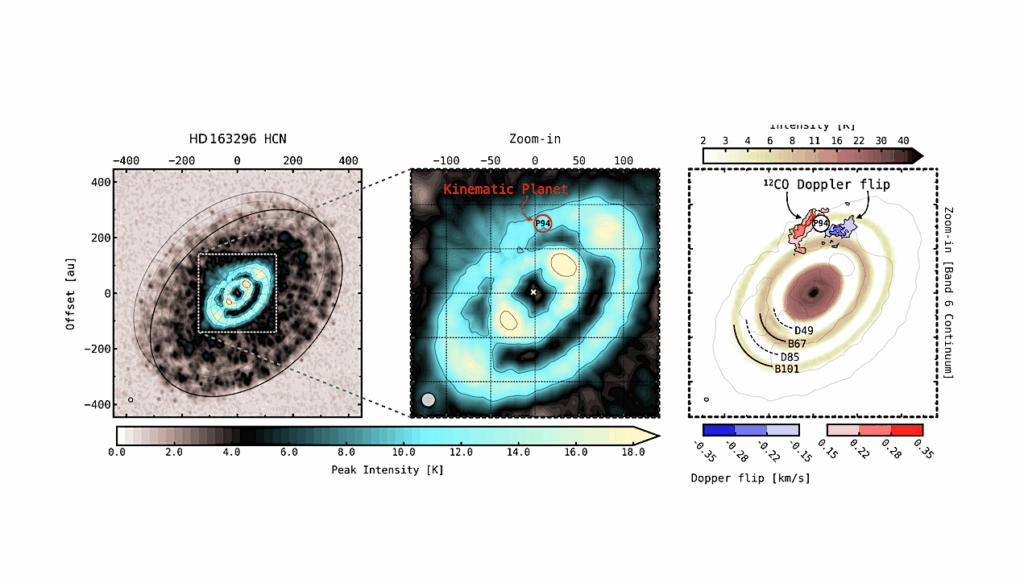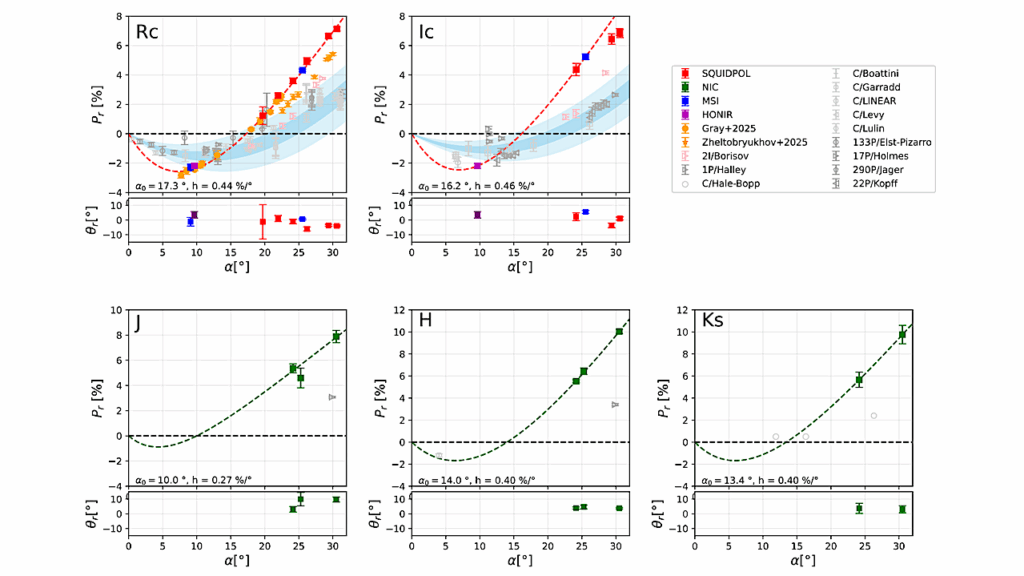Extreme Weather Variability on Hot Rocky Exoplanet 55 Cancri e Explained by Magma Temperature-Cloud Feedback

Observations of the ultra-short period rocky exoplanet 55 Cancri e (55 Cnc e) indicate that the planet’s dayside infrared radiation fluctuates by a factor of at least six on sub-weekly timescales, for unknown reasons.
We propose a feedback mechanism where increased reflective clouds cool surface magma, subsequently reducing cloud formation, which may offer a potential explanation for these phenomena.
In this mechanism, under less cloudy conditions, stellar radiation heats the surface magma, causing it to release more silicate vapor, which then condenses to form reflective clouds. Once formed, these clouds reduce stellar insolation at the surface, leading to surface cooling, which in turn reduces vapor supply, decreasing cloudiness.
A time lag between the temperature increase of surface magma and the subsequent increase in cloudiness (likely due to lagged atmospheric transport of cloud-forming vapor) enables self-sustained oscillations in surface temperature and cloud reflectivity.
These oscillations manifest as variations in both the emitted thermal radiation and the reflected stellar radiation, causing variability in secondary eclipse depths across different wavelengths without significantly affecting the transit depth. Using a simple model, we find that diverse planetary parameters can reproduce the observations.
Additionally, we demonstrate that secondary eclipse depths at different wavelengths can oscillate out of phase, consistent with recent observations by the James Webb Space Telescope.
Finally, we discuss observational strategies to test this proposed mechanism on 55 Cancri e. If confirmed, observable ocean-atmosphere dynamics on exoplanets would open a new window into the composition, evolution, and fate of rocky planet volatiles.
Kaitlyn Loftus, Yangcheng Luo, Bowen Fan, Edwin S. Kite
Comments: Authors Luo and Loftus contributed equally. 17 pages, 3 figures, 2 tables. Associated code at this https URL
Subjects: Earth and Planetary Astrophysics (astro-ph.EP)
Cite as: arXiv:2409.16270 [astro-ph.EP] (or arXiv:2409.16270v1 [astro-ph.EP] for this version)
https://doi.org/10.48550/arXiv.2409.16270
Focus to learn more
Submission history
From: Kaitlyn Loftus
[v1] Tue, 24 Sep 2024 17:40:47 UTC (797 KB)
https://arxiv.org/abs/2409.16270
Astrobiology








